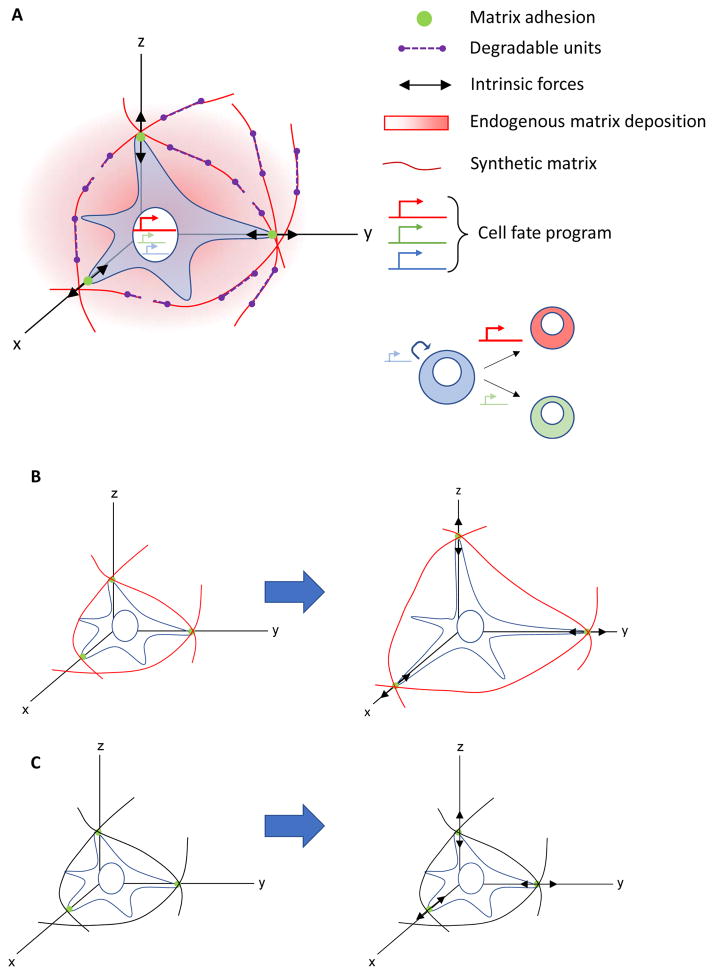Figure 4.
Three-dimensional synthetic niches physically confine stem cells and present mechanical cues that impact cell behavior and fate through forces. A) The synthetic extracellular matrix (ECM) provides resistance to cell-generated forces, and in response, stem cells can actively remodel the niche by traction-mediated deformations, degradation of cleavable domains by proteases (purple segments), and production of additional ECM. The stiffness and other mechanical cues from the synthetic matrix network can trigger a self-renewal program (blue arrow), or programs defining distinct lineages of daughter cells (red and green arrows). B) Viscoelastic synthetic niche allows cells to remodel their surrounding matrix network (red), by applying traction forces (black arrows) on matrix ligands (green circles) that allow the cell to spread and change shape by plastically, or permanently, deforming the polymer chains. C) Conversely, a purely elastic non-degradable synthetic niche (black) does not permit cells to plastically deform the polymer network and prevents cell spreading.

